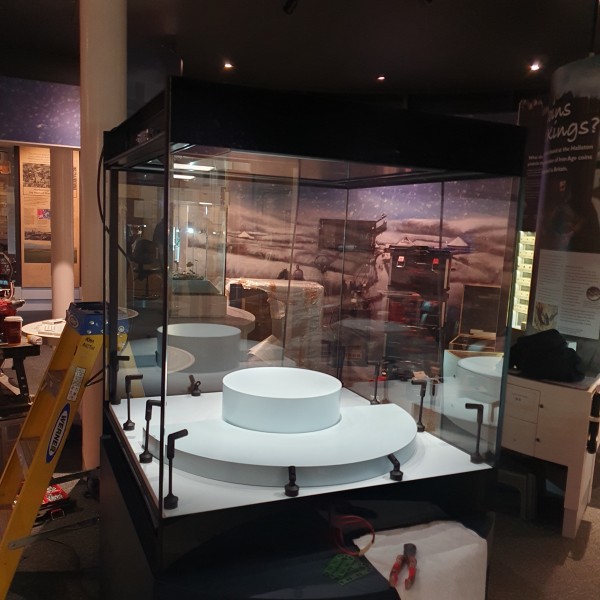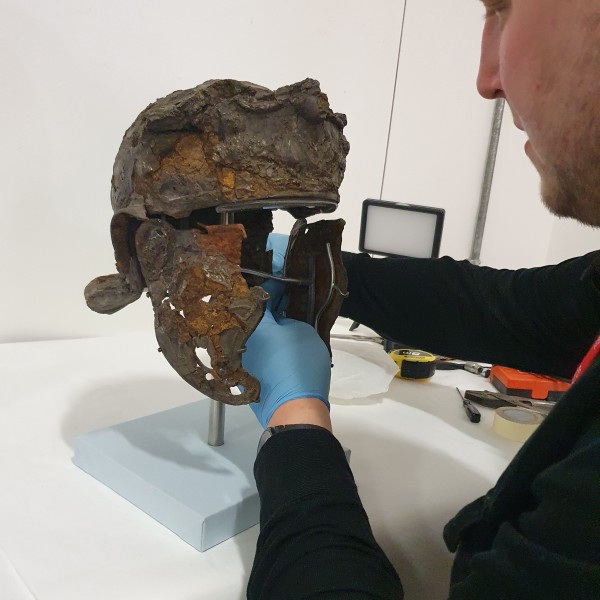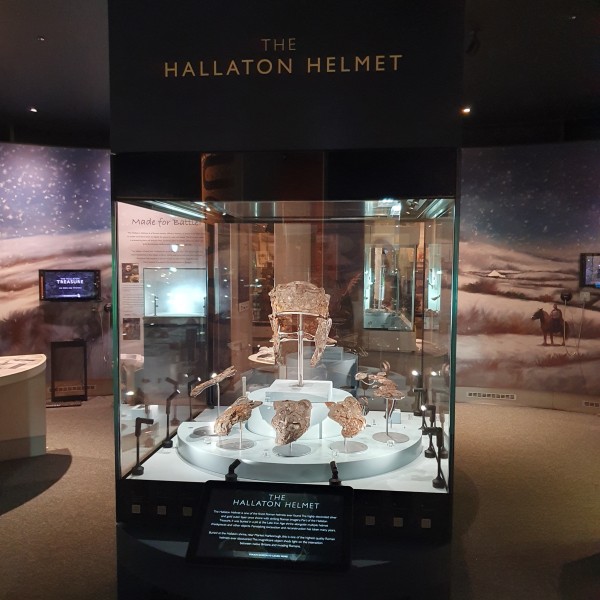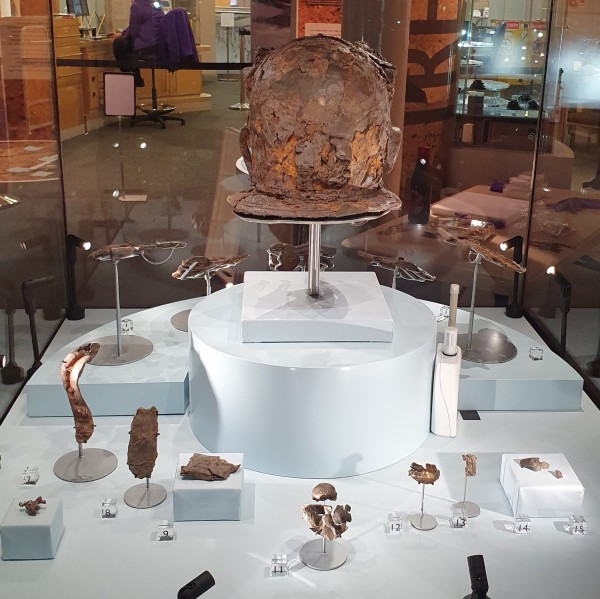14 March 2024
Re-displaying the Hallaton Roman Helmet
March 2024 saw the re-display of one of the most significant objects in our collection – the Hallaton Roman Helmet. We will be sharing more behind the scenes information about this project over the coming months. This blog post will delve into preparations for the new displays.
The helmet is part of the Hallaton Treasure much of which is displayed in the Hallaton Treasure Gallery at Harborough Museum, Market Harborough, Leicestershire. Since 2012, the helmet bowl had been displayed alongside two of the cheekpieces from the assemblage following conservation and restoration by British Museum conservators. The rest of the objects found buried in the helmet pit required further conservation work and this was not completed until February 2020.
There were many more objects to display, including five other helmet cheekpieces - a new case was required and the museums team needed help from a museum designer to integrate the new case successfully within the existing circular gallery. RFA Design were chosen and helped to commission museum case designers Glasshaus.
The helmet objects are constructed of iron with silver-plating and gilding and are very fragile - the iron having corroded during 2000 years spent in the soil. Therefore, the case needed to be well-sealed and able to maintain a low and stable relative humidity to protect the objects. Silica gel is stored in a compartment in the base of the case and air flow is improved by the installation of a small internal fan. Staff can monitor the environment remotely via an environmental monitoring system. All materials in the case construction have been tested as safe for using in museum displays and will not have any adverse effects on the delicate objects.
David Orwell from Object Workshop installed the objects on the bespoke mounts prior to installation, assisted by the original British Museum conservators who are kind enough to volunteer for us now they have retired.
Visitors can access lots of information, images and film clips via touchscreens by blackbox-av as well as via more traditional graphic panels. We worked with Design Futures Group to create low-tech physical interactives such as an oversized helmet cheekpiece jigsaw and 3D prints of the very fragile cheekpieces which can be touched and held.
Two very special replica helmets have been created for the gallery and we will look into this process on further blog posts.





